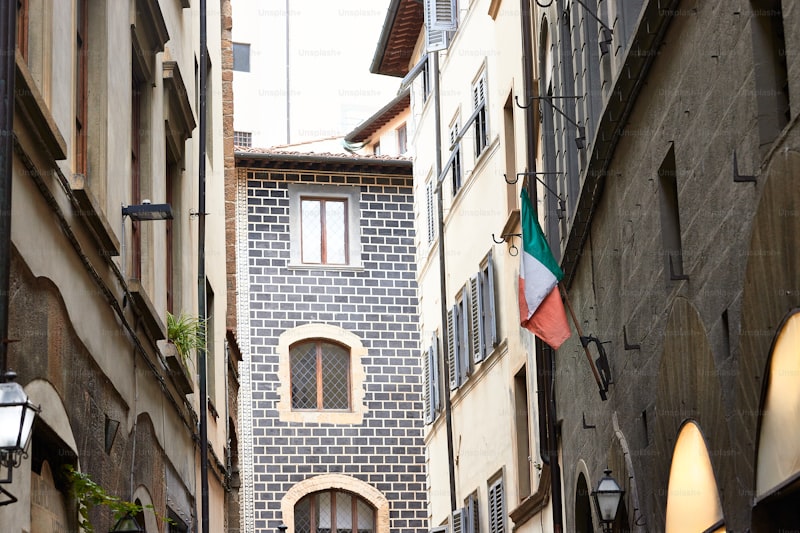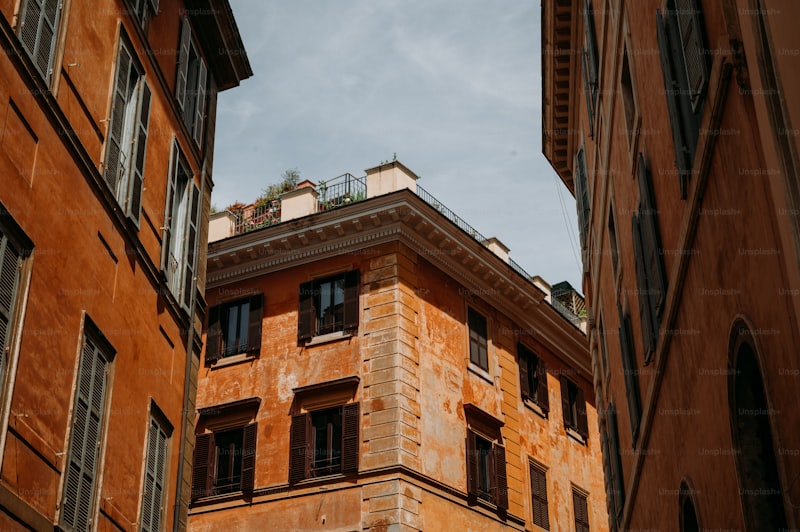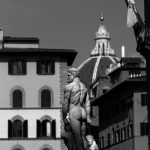Rome, the Eternal City, stands as a testament to the grandeur of the Roman Empire. Its iconic landmarks, such as the Colosseum and the Pantheon, transport visitors back to the days of gladiators and emperors. The cobblestone streets of the historic center lead to hidden piazzas and ornate fountains, where each corner reveals a piece of history waiting to be discovered.
Florence, nestled in the heart of Tuscany, embodies the artistic and intellectual achievements of the Renaissance. The cityscape is dominated by the majestic Florence Cathedral, known as the Duomo, with its iconic dome designed by Brunelleschi. Art lovers flock to the Uffizi Gallery to admire masterpieces by Botticelli, Leonardo da Vinci, and Michelangelo, while the Ponte Vecchio bridge beckons with its charming shops and stunning views over the Arno River.
Venice, built on a network of canals, exudes a unique charm that captivates every visitor. The Grand Canal is the main artery of the city, lined with palaces that once housed Venetian nobility. St. Mark’s Basilica and the Doge’s Palace showcase Byzantine and Gothic architecture, while a gondola ride offers a romantic glimpse into Venice’s storied past.
Naples, with its bustling streets and vibrant culture, sits in the shadow of Mount Vesuvius. The city’s historic center, a UNESCO World Heritage site, is a maze of narrow alleys and Baroque churches. Nearby, the ruins of Pompeii and Herculaneum offer a haunting glimpse into life during the Roman Empire, frozen in time by the catastrophic eruption of Vesuvius in 79 AD.
Each of Italy’s historic cities tells a tale of triumph and transformation, where ancient ruins coexist with vibrant street life and timeless beauty. Whether exploring the ruins of an ancient empire or marveling at Renaissance masterpieces, visitors to Italy are sure to be enchanted by its rich history and enduring legacy.
Exploring Timeless Charm: Italy’s Most Iconic Historic Cities
Rome, the Eternal City, stands as a living museum of the Roman Empire. Visitors stroll through the Colosseum, imagining the grandeur of gladiatorial contests, and marvel at the intricate craftsmanship of the Pantheon. Every corner tells a story of emperors, artists, and architects who shaped Western civilization.

In Florence, art and culture converge in a Renaissance masterpiece. The city’s skyline is dominated by the red-tiled dome of the Florence Cathedral, while the Uffizi Gallery houses masterpieces by Botticelli, Leonardo da Vinci, and Michelangelo. Florence is a living tribute to the creative genius of the Renaissance period.
Venice, built on a network of canals, is a city unlike any other. Gondolas glide gracefully along the Grand Canal past palaces and churches adorned with Byzantine mosaics. St. Mark’s Basilica and the Doge’s Palace stand as symbols of Venetian wealth and power during the height of the Republic.
Milan is Italy’s fashion and finance capital, but it also boasts a rich historical legacy. The Gothic spires of the Milan Cathedral dominate the cityscape, while Leonardo da Vinci’s “The Last Supper” captivates visitors at the Santa Maria delle Grazie. Milan blends contemporary elegance with centuries-old tradition.
Naples, with its vibrant street life and proximity to Mount Vesuvius, offers a glimpse into ancient Roman civilization at the nearby archaeological sites of Pompeii and Herculaneum. The city itself is a maze of narrow streets lined with pizzerias and Baroque churches.
Each of these cities encapsulates a unique chapter in Italy’s history, from the grandeur of ancient Rome to the artistic brilliance of the Renaissance and the maritime prowess of Venice. Exploring Italy’s most iconic historic cities is a journey through time, where every cobblestone street and majestic monument tells a tale of passion, power, and enduring beauty.
Unveiling Italy’s Living History: Top Destinations in Historic Cities
Rome stands as a testament to the power and influence of the ancient Roman Empire. Here, the iconic Colosseum stands tall, echoing the cheers of gladiators past. Wander through the Roman Forum, where political intrigue once thrived amidst grand temples and basilicas. Every cobblestone street whispers tales of emperors and poets, inviting you to delve into the heart of ancient civilization.
In Florence, the birthplace of the Renaissance, art and culture flourish in every corner. Marvel at Michelangelo’s David in the Accademia Gallery, or lose yourself in the masterpieces of Botticelli at the Uffizi Gallery. Stroll across the Ponte Vecchio, adorned with jeweler shops since medieval times, and feel the essence of a city that nurtured Da Vinci and Dante.
Venice, with its labyrinthine canals and ornate palaces, offers a glimpse into a bygone era of maritime trade and opulence. Glide along the Grand Canal on a gondola, passing under the Rialto Bridge, and discover hidden gems like the Peggy Guggenheim Collection. Venice is not just a city; it’s a masterpiece painted by centuries of history and artistic genius.
Near Naples lies Pompeii, frozen in time by the eruption of Mount Vesuvius in 79 AD. Walk through its remarkably preserved streets, where ancient Roman life unfolds before your eyes. The archaeological treasures of Pompeii offer a poignant reminder of the fragility of civilizations and the enduring allure of the past.
Milan, a global capital of fashion and design, also boasts a rich historical tapestry. Visit the magnificent Duomo di Milano, a Gothic masterpiece that took six centuries to complete. Admire da Vinci’s “The Last Supper” at the Santa Maria delle Grazie, and explore the opulent La Scala opera house. Milan seamlessly blends its avant-garde spirit with a reverence for its storied past.
Journey Through Italy’s Rich Past: Must-Visit Historic Cities
Venice, the city of canals and gondolas, stands as a marvel of medieval engineering and Renaissance opulence. Its labyrinthine streets and grand palaces evoke an era of maritime trade and artistic patronage by the Venetian Republic. Visitors can lose themselves in the romance of St. Mark’s Basilica, adorned with Byzantine mosaics that shimmer like jewels under the Venetian sun.
Florence, nestled in the heart of Tuscany, is a treasure trove of Renaissance art and architecture. The iconic Duomo dominates the skyline, its red-tiled dome a symbol of Florence’s artistic prowess under the Medici dynasty. The Uffizi Gallery invites art enthusiasts to marvel at masterpieces by Michelangelo, Botticelli, and Leonardo da Vinci, each stroke of genius preserved for future generations to admire.
Rome, the Eternal City, needs no introduction. From the grandeur of the Colosseum, where gladiators once battled for glory, to the solemnity of the Vatican City, seat of the Catholic Church, Rome embodies the rise and fall of empires. The ancient ruins of the Roman Forum and the imposing Pantheon speak volumes about Rome’s enduring influence on Western civilization.
Naples, overlooking the azure waters of the Bay of Naples, is a city steeped in layers of history. Its UNESCO-listed historic center teems with narrow alleys and Baroque churches, while nearby Pompeii and Herculaneum offer poignant insights into life during the Roman Empire, frozen in time by the eruption of Mount Vesuvius in 79 AD.
Milan, Italy’s fashion capital, surprises with its blend of modernity and history. The Gothic grandeur of the Milan Cathedral contrasts with the futuristic skyline of the new business district. Leonardo da Vinci’s masterpiece, “The Last Supper,” draws art aficionados to the refectory of Santa Maria delle Grazie, where the genius of the Renaissance is immortalized on a humble convent wall.
Rediscovering Ancient Marvels: Historic Cities of Italy You Can’t Miss

Let’s start with Rome, the eternal city that captures the heart of anyone who visits. Imagine strolling through the Colosseum, where gladiators once battled amidst roaring crowds, or tossing a coin into the Trevi Fountain, a tradition believed to ensure a return to Rome. Each cobblestone street in Rome whispers stories of emperors, artists, and visionaries who shaped the city into the cultural powerhouse it is today.

Venture into Florence, where the Renaissance bloomed in all its glory. The city is a living museum, with masterpieces by Michelangelo, Leonardo da Vinci, and Botticelli adorning its galleries and cathedrals. Climbing to the top of the Duomo rewards you with panoramic views of red-tiled roofs and the rolling Tuscan hills beyond, a sight that inspired generations of artists.
Then there’s Venice, a city unlike any other, where gondolas glide gracefully along winding canals lined with centuries-old palaces. Lose yourself in the labyrinthine streets of this floating city, where every bridge and piazza tells a story of trade, exploration, and artistry. Venice is a testament to human ingenuity, built on a network of islands that defied the sea itself.
Journey south to Pompeii, frozen in time by the devastating eruption of Mount Vesuvius in 79 AD. Walk through streets flanked by remarkably preserved homes, temples, and amphitheaters, offering a rare glimpse into daily life in ancient Rome. The haunting ruins of Pompeii are a poignant reminder of the fragility of civilizations and the enduring power of nature.
In Verona, romance and history intertwine effortlessly. This picturesque city is where Shakespeare set his timeless tale of Romeo and Juliet. Visit Juliet’s House with its iconic balcony and leave a message on the walls beneath, joining countless others in celebrating the enduring power of love.
Italy’s historic cities are more than just remnants of the past; they are vibrant cultural hubs where every cobblestone has a story to tell. Whether you’re drawn to the grandeur of Rome, the artistic legacy of Florence, the romantic allure of Venice, the archaeological wonders of Pompeii, or the Shakespearean charm of Verona, each city offers a unique window into Italy’s rich and storied past. So, pack your bags and embark on a journey through time in these ancient marvels.
Frequently Asked Questions
Which historic cities in Italy offer the best culinary experiences?
Discover which historic cities in Italy offer unparalleled culinary experiences. Explore the rich gastronomic heritage of cities like Rome, Florence, Bologna, and Naples, renowned for their traditional dishes, local ingredients, and vibrant food scenes.
What are some must-visit historic cities in Italy?
Explore Italy’s must-visit historic cities like Rome, Florence, and Venice. Each city offers iconic landmarks such as the Colosseum in Rome, the Renaissance art in Florence, and the canals of Venice. Discover centuries of history, architecture, and cultural heritage in these enchanting destinations.
What are the top landmarks to see in Rome, Italy?
Discover Rome’s iconic landmarks with our guide featuring top attractions such as the Colosseum, Vatican City with St. Peter’s Basilica, the Trevi Fountain, and the Pantheon. Explore ancient history and breathtaking architecture in the heart of Italy’s capital.
How can I explore Italy’s ancient cities on a budget?
Discovering Italy’s ancient cities on a budget is possible with smart planning. Focus on visiting lesser-known destinations, utilize local transportation options, and explore free or discounted attractions like museums and historical sites. Opt for budget accommodations and enjoy local cuisine at affordable eateries to make the most of your journey without overspending.
What are the best ways to travel between historic cities in Italy?
Discover the optimal ways to travel between Italy’s historic cities with ease. Learn about efficient transportation options like high-speed trains, regional buses, and organized tours. Ensure a seamless journey through Italy’s rich cultural heritage.


